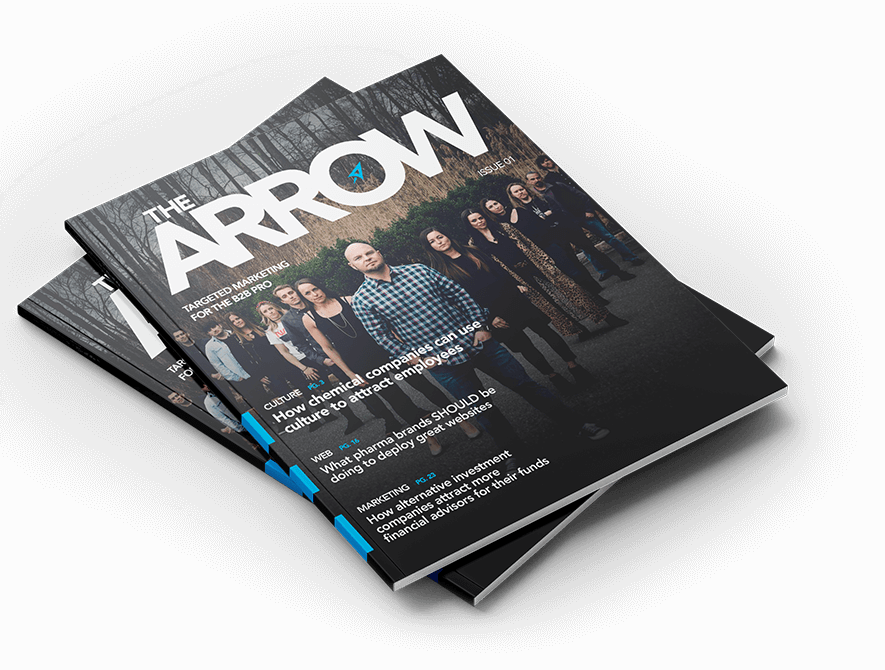Progressive Web Apps — What Brands Need To Know
Chris Mulvaney is the CEO of CMDS. I make things... I’m the creative entrepreneur with passion for (re)making brands and inventing solutions to problems no one knows exist.
Progressive web apps (PWAs) blend the best of both worlds, combining traditional website compatibilities with the “app-like” feel of native mobile application capabilities. PWAs are growing in popularity because they work for every user.
Curious about the benefits of progressive web apps for your business?
Let’s dive in.
What Are Progressive Web Apps?
Every day, most users engage with about five different apps (mostly social). Why aren’t people looking for native apps anymore… especially when most of their time is spent on mobile? Maybe they have limited space on their phones? Maybe they’re finding it hard to discover a reliable app that doesn’t take too long to load or crash unexpectedly.
Taking full advantage of these common frustrations, progressive web apps have entered the scene.
Progressive web apps are browser-driven applications that look, feel and act like both a web page and a native mobile application at the same time. This means users can access all their content and capabilities, without needing to download a mobile app.
Google first introduced the idea back in 2015, but since then, PWAs have generated a lot of traction, firing up the world of mobile web with a new immersive experience.
What Is the Difference Between Native Apps and PWA?
Simply put, native app is written to run on a mobile device. A PWA is written to run within a web browser.
True native apps are built specifically for the platform they run on — iOS or Android. Pretty much any app you have downloaded on your device is considered a native app. Feature-rich apps can offer a lot of value for customers and allow marketers to deliver marketing messages through this channel, but, they have to be built separately to accommodate each platform requiring much time and resources to develop.
Previously, in order to create next-level engaging experiences for users, brands had to develop a native application. Now, thanks to the constant evolution of our digital landscape, small and large businesses alike are leveraging a new breed of apps: progressive web apps.
Since progressive web apps are both on and off the web, they’re always up-to-date, offering full functionality and immediate accessibility of visiting a website. While its predecessor, the traditional native app, required different versions to accommodate different platforms, PWAs are universal, and ensure a fast and intuitive user experience, with modern web features that behave like native apps. Without a doubt, this revolutionary approach to app development ultimately saves on time and development costs.
Studies show that a typical mobile app loses about 20% of its users between the users’ first contact with the app and when they start to use the app.
As new content or features get rolled out, PWA users won’t be required to actively download updates in order to access new functionalities.
PWA Examples
Delivering an “app-like experience,” PWAs are currently being leveraged by brands such as: Twitter, The Washington Post, Forbes, Starbucks, and high-end outdoor retailer, Patagonia. Patagonia went as far as shared a note to app users: “It’s time to say goodbye. … Now that our website is beautiful and easy to use on all mobile web browsers, we will no longer be supporting this app—you can delete it from your device.”
You can find a big list of brands on the progressive web app bandwagon at pwa.rocks and we expect the list to keep growing as this technology becomes increasingly accepted.
Even Pinterest, the popular virtual cork board, says they went from a 1% conversion on mobile web to core engagement levels of 60% on their PWA. They experienced an increase in ad click-throughs and time spent on the mobile web, most likely due to the load time of mobile interactive features on the site dropping from 23 seconds to 5.6 seconds.
Progressive Web Apps for Small Business
 But, it’s not just for the big brands. Considering PWAs are more affordable than native mobile apps, small and medium sized businesses can also benefit. For example, a successful PWA could be for a local restaurant that wants to start a loyalty or reward program, create reservation accessibility, or feature food ordering with an updated menu.
But, it’s not just for the big brands. Considering PWAs are more affordable than native mobile apps, small and medium sized businesses can also benefit. For example, a successful PWA could be for a local restaurant that wants to start a loyalty or reward program, create reservation accessibility, or feature food ordering with an updated menu.
More Benefits of Progressive Web Apps
- Visibility: When it comes to SEO optimization, progressive web apps are organically discoverable through search engines. From search to site, this drives more users to your website, increases session length and improves overall page rankings.
- Simplicity: The simple “add to home screen” functionality offers seamless accessibility without the hassle of downloading anything from the marketplace. By removing the barriers of complex installation, you’ll increase user conversion.
- Relevancy: Relevant push notifications allow brands to fully engage their audience and promote content seamlessly. This means means better retention, which, in turn, translates to higher conversion rates.
- Storage: PWAs don’t gobble up as much precious storage space since they are hosted right on the web server. This allows for an app-like experience for users, right in their browser.
- Compatibility: PWAs use cross-platform technologies that deliver a cohesive experience in which native apps can’t compare with. Responsive designs with platform hybridization provide a richer user experience on mobile and desktop.
- Speed: Over 50% of mobile site visits are abandoned if it takes more than 3 seconds to load. No doubt, speed is a key driver to encouraging a conversion. Instant load times keep users engaged, regardless of their network.
- Security: At a time when security and privacy concerns loom larger than ever, HTTPS offers secure access.
- Shareability: Because they’re attached to a standard URL, they foster higher engagement and make sharing easier.
Progressive web apps continue to evolve with new features; this list only hints at what PWAs are truly capable of today.
“It’s not too late for brands to embrace this digital transformation. But, it’s getting close. If you want to get ahead of your competitors, now’s a great time to get started. ”
— Chris Mulvaney, CEO CMDS
With customers increasingly using digital platforms to search for products and services, visibility and staying ahead of your rivals is key. And we know just the way you can do it.
One App. Any Device.
At CMDS, we develop progressive web applications that offer brands the functionalities of native apps and that are designed to work reliably across all browsers, platforms and devices. As a trusted progressive web apps development agency, our team has the experience to build high-performance PWAs for brands nationwide.
The question is not if your brand should adopt progressive web apps for your digital marketing strategy, but when.
If you want to learn more about updating your website to a PWA and increasing your conversions, we’d love to chat! It’s time to think beyond the app store, contact us and we’ll set up a time to introduce you to the world of progressive web apps.






